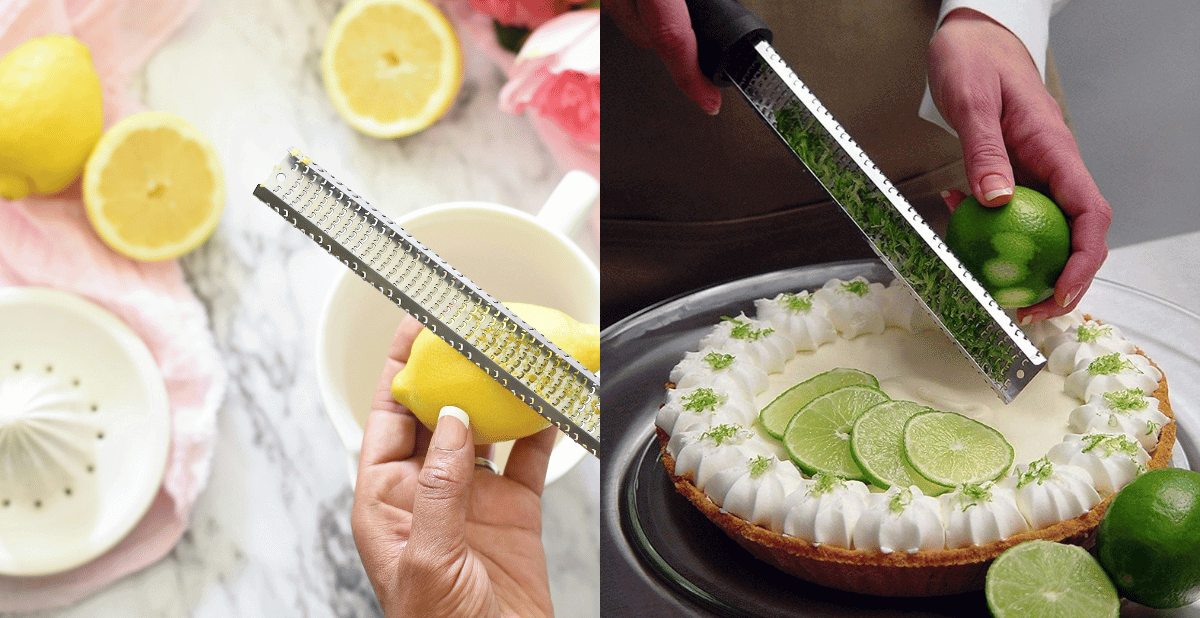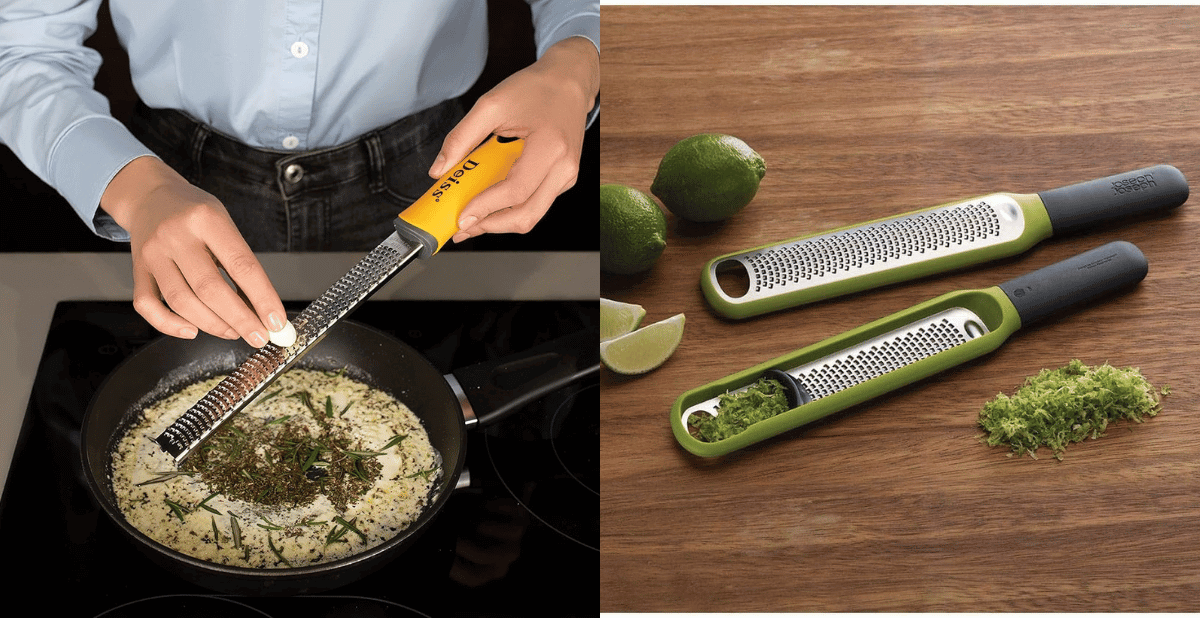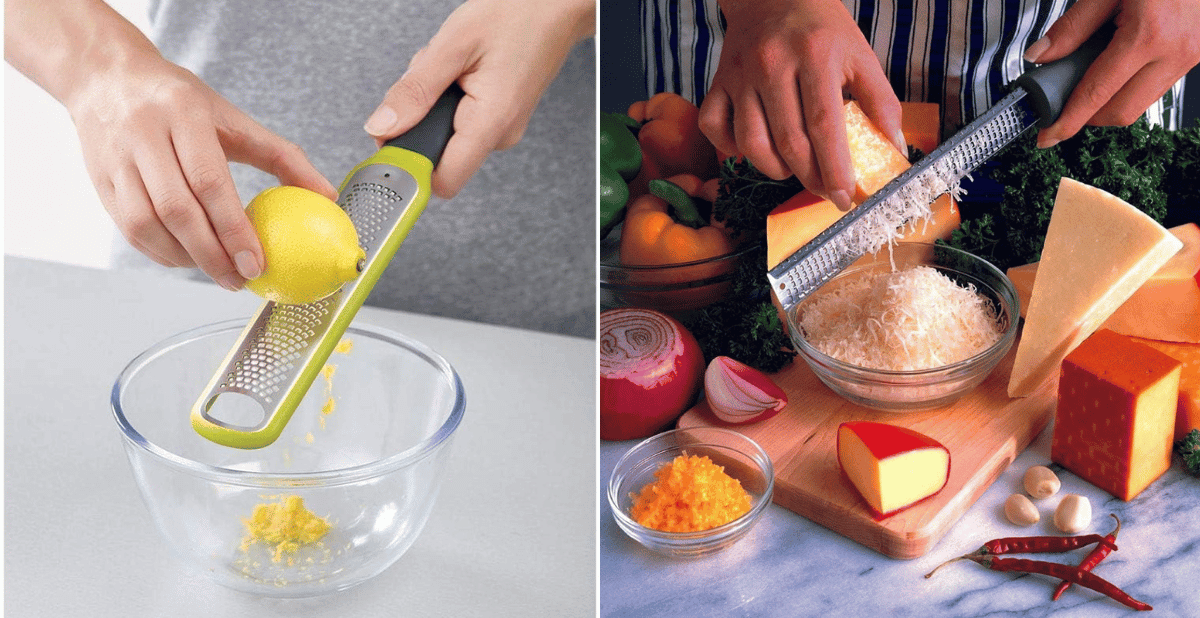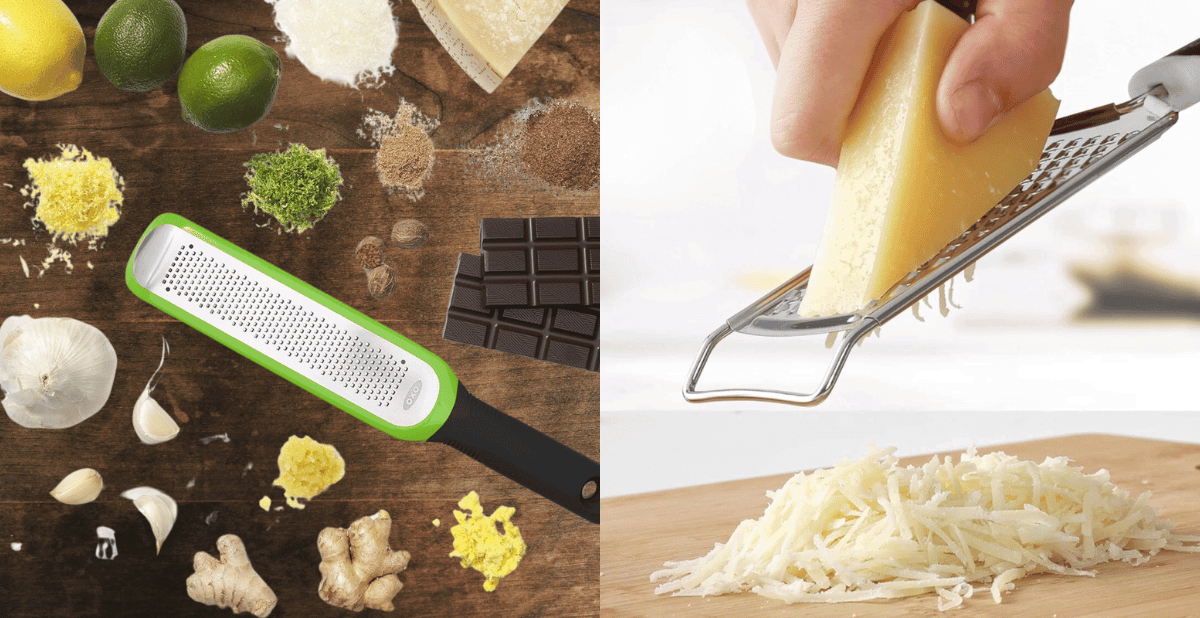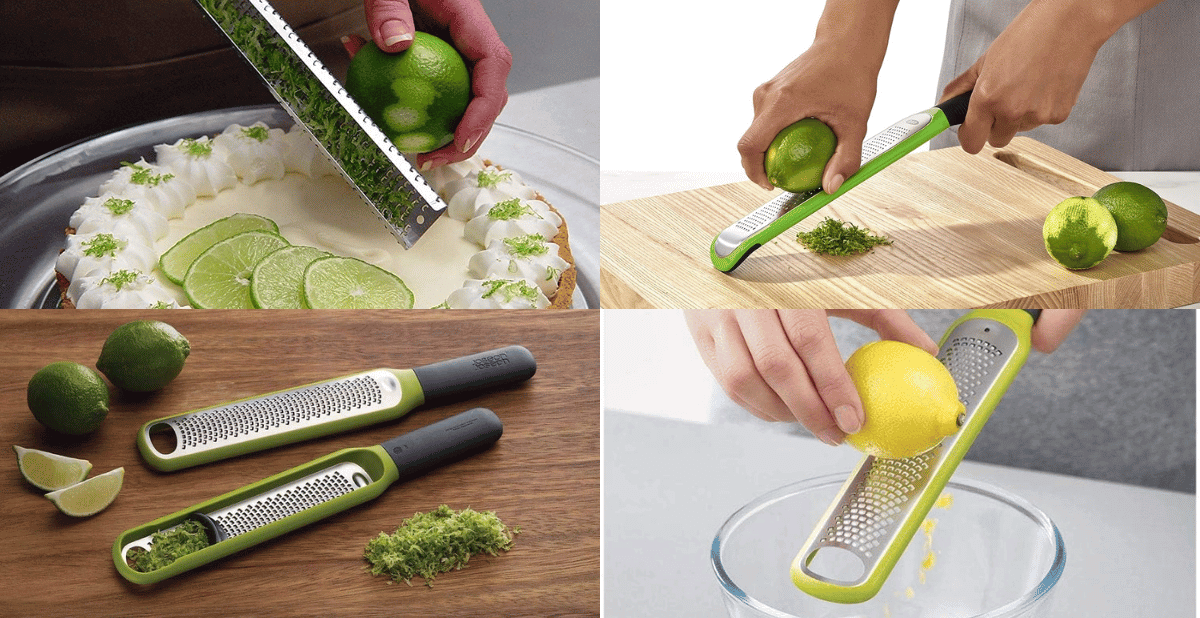The tools you choose can make all the difference when preparing ingredients in the kitchen. A common question is: Is a microplane the same as a zester?
Key Takeaways:
- Understand the distinct functions of a microplane and a zester.
- Learn about the versatility of Microplane graters in the kitchen.
- Discover the importance of choosing the right tool for zesting citrus fruits and other culinary tasks.
The Essential Kitchen Debate: Microplane vs. Zester
While both tools extract flavor from the surface of citrus fruits and other foods, they are not identical in design or function.
A zesterThe tools you choose can make all the difference when preparing ingredients in the kitchen is specifically designed to remove the thin outer layer of citrus peel, known as lemon zest or just the zest, without touching the bitter white pith beneath.
On the other hand, a microplane, originally a woodworking tool, has found its place in the culinary world as a fine grater capable of handling a variety of tasks.
Zesting Citrus Fruits: More Than Just a Garnish
Zest citrus fruits like lemons and oranges are often used to flavor dishes and baked goods.
The resulting zest is packed with essential oils with a concentrated citrus aroma and taste.
A citrus zester typically features small holes sharp enough to shave off just the zest.
This precision ensures that the zest is free from the pith, which can impart an unwanted bitterness to your dish.
Microplane Graters: A Multipurpose Marvel
Microplane graters have gained popularity for their ability to grate parmesan cheese, spices, and garlic easily.
The premium classic series zester from Microplane is an ergonomically designed tool with sharp teeth and a non-slip material for a secure grip.
These graters often come with a rubber foot to prevent slipping and can be a versatile addition to any kitchen drawer.
Grating Hard Cheeses with Precision
Microplane graters excel at grating hard cheeses like Parmesan.
Their sharp blades can turn a hard block of cheese into fine, fluffy shreds that melt quickly and evenly over hot dishes.
Unlike a regular or box grater with larger holes, a microplane creates a finer grate, perfect for topping pasta and salads.
The Fine Art of Grating Spices
Grating spices is another area where the Microplane shines.
Hard spices such as nutmeg and cinnamon can be transformed into a fine powder, ideal for flavoring dishes and drinks.
A Microplane's fine-grater surface ensures that only the desired spice is used, preventing overpowering flavors.
Lemon Zest: A Citrusy Staple in Culinary Creations
Lemon zest is a key ingredient in many recipes, from marinades to desserts.
While a zester grater is designed to produce long, thin strips of zest, a Microplane can create a finer zest more integrated into the dish.
This is particularly useful when you want the lemon flavor distributed evenly throughout a recipe.
Stainless Steel: Dishwasher Safe and Durable
Many microplane zesters and graters are made from stainless steel, making them dishwasher-safe and easy to maintain.
This is a significant advantage for busy cooks who value efficiency and hygiene in their kitchen tools.
Hand washing is also an option, but the convenience of placing the tool in the dishwasher is a clear benefit.
Grating Garlic Without the Fuss
Grating garlic can be a sticky and pungent task, but with a microplane, it becomes a breeze.
The fine grater effortlessly turns garlic cloves into a paste-like consistency, perfect for incorporating into sauces, dressings, and marinades.
This method also helps to distribute the garlic flavor more evenly than chopping or mincing.
Grating Ginger: No Strings Attached
Grating ginger is another task that can be challenging with a regular grater.
The fibrous nature of ginger can lead to stringy pieces that are unpleasant to eat.
With its fine grater surface, a Microplane can reduce ginger to a smooth paste, making it easier to blend into recipes without any fibrous bits.
The Box Grater: A Bulky Alternative
While a box grater is a common kitchen tool, it takes up more storage than a slim microplane or zester.
The larger box grater and multiple grating surfaces can be useful for some tasks, but the smaller tools are often more efficient and easier to handle for zesting and fine grating.
The Citrus Zest Appeal in Food Blogging
Food bloggers worldwide have long celebrated the vibrant kick that citrus zest brings to a dish.
Citrus zest is not just about the burst of flavor; it's about the visual appeal and aromatic zing that can transform a recipe from mundane to extraordinary.
When food bloggers incorporate citrus zest into their content, they tap into a sensory experience that resonates with their audience.
The bright colors and fresh scents are as photogenic as they are delicious, making them a staple in food photography and recipe development.
Moreover, these culinary aficionados often highlight the use of a microplane zester.
The fine, fluffy shreds of zest produced by a microplane grater are ideal for even distribution throughout a dish, ensuring that each bite is infused with citrusy goodness.
Food bloggers often emphasize the importance of using only high-quality sources for their kitchen tools, and a sharp, durable microplane zester fits the bill perfectly.
It's a small detail that speaks volumes about the commitment to quality in the food blogging community.
The Evolution of the Rasp Grater in Modern Kitchens
The rasp grater, a cousin of the microplane grater, has seen its evolution in the modern kitchen.
Initially designed as a woodworking tool, the rasp grater's fine, sharp teeth have made it an indispensable gadget for achieving the perfect citrus zest.
Its popularity soared as chefs and home cooks discovered its versatility and ease of use.
The rasp grater is not just for citrus; it's also perfect for grating hard spices, chocolate, and even parmesan into fine, delicate mounds that melt effortlessly into hot dishes.
In the quest for convenience and safety, the latest rasp graters often feature non-slip material on their handles and bases.
This thoughtful design ensures the tool stays firmly in place, reducing the risk of slips and injuries.
Many of these graters are made from stainless steel, making them dishwasher-safe and easy to clean.
This combination of functionality and safety has solidified the rasp grater's place in the well-equipped kitchen, proving that even the simplest tools can benefit from smart design enhancements.
Just the Zest: Avoiding the Bitter Pith
When using a zester or microplane, avoiding the bitter white pith just beneath the citrus peel is crucial.
A zester is designed to remove only the colored part of the peel, while a Microplane requires a bit more care to ensure that only the zest is grated.
This attention to detail can significantly improve the taste of your dish.
The Rubber Foot: A Small but Mighty Feature
The rubber foot found on many microplane zesters is a small feature that greatly enhances the tool's usability.
It provides stability while grating, preventing the tool from slipping and potentially causing injury.
This design consideration shows the thought put into making these tools safe and effective for home cooks.
The Sharp Teeth: Engineered for Efficiency
The sharp teeth of a Microplane are a testament to its origins as a woodworking tool.
These teeth are designed to cut through hard materials, which makes them useful in the kitchen for grating hard cheeses and spices.
The efficiency of these teeth means less effort is required from the cook, making the task quicker and more enjoyable.
Ergonomically Designed for Comfort
An ergonomically designed handle is a hallmark of a quality microplane or zester.
This design ensures that the tool is comfortable to hold and use, reducing the strain on the hands and wrists during repetitive tasks.
Comfort in the kitchen is not to be underestimated, as it can greatly affect the enjoyment of cooking.
The Kitchen Drawer: A Tool for Every Task
A well-stocked kitchen drawer should have a microplane and a zester, as each tool has unique uses.
While they can sometimes be used interchangeably, having both ensures that you're always prepared for the task, whether zesting lemons or grating ginger.
The Resulting Zest: A Burst of Flavor
The zest resulting from either a microplane or a zester can elevate a dish from good to great.
The concentrated flavor adds depth and brightness to recipes, making it a favorite among food bloggers and serious food enthusiasts alike.
Hard Spices: A Touch of Warmth
Grating hard spices with a Microplane can add a touch of warmth and complexity to dishes.
Grating spices finely allows them to blend seamlessly into recipes, enhancing the overall flavor profile without overpowering other ingredients.
Little Holes, Big Impact
The small holes of a zester are specifically designed to produce just the zest, while the slightly larger holes of a Microplane can tackle a wider range of grating tasks.
Despite their compact size, both tools greatly impact the kitchen.
Non-Slip Material: A Grip on Safety
Non-slip material on the handle of a microplane or zester greatly impacts comfort and safety.
A secure grip ensures the tool doesn't slip during use, reducing the risk of accidents and injuries.
Blades: The Cutting Edge of Kitchen Tools
The blades of a microplane are what set it apart from a regular grater.
These blades are engineered to be incredibly sharp, making them easily grate even the hardest of cheeses and spices.
Coarse vs. Fine: Choosing the Right Grater
When it comes to grating, the coarseness of the grater matters.
A coarse grater is better suited for items like grated cheese, where a larger shred is desirable.
A fine grater, like a Microplane, is ideal for tasks that require a more delicate touch, such as zesting citrus or grating spices.
Until Next Time...
In conclusion, while a microplane and a zester may seem similar at first glance, they are distinct tools with different purposes.
A zester is designed to remove just the zest from citrus fruits, while a microplane is a versatile fine grater that can handle a variety of grating tasks, from hard cheeses to spices.
Both tools are valuable in the kitchen, and understanding their unique functions can help you choose the right tool for your culinary needs.
We hope you found our article helpful!
Happy Zesting,
MommaPuff






